- Member Login
- Library Patron Login
SUBSCRIBE TO OUR
FREE NEWSLETTERS
Search: Title Author Article Search String:

When the New York Times book review panned the classics
Bookbrowse news - the full story.
Sep 30 2021
Some of today’s best-loved books — think “Catch-22,” “Tender Is the Night” and even “Anne of Green Gables” — had a rocky reception in the New York Times' pages.
More News Stories
Support BookBrowse
Join our inner reading circle, go ad-free and get way more!
Find out more
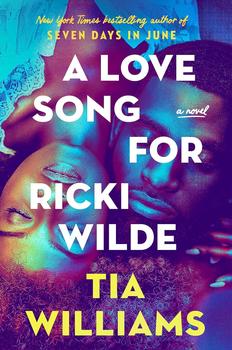
BookBrowse Book Club
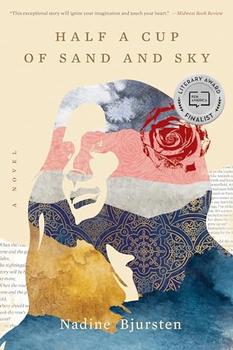
Members Recommend
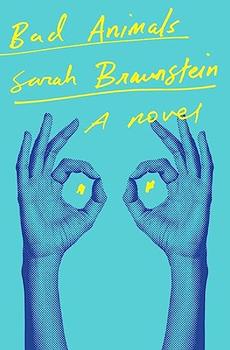
Bad Animals by Sarah Braunstein
A sexy, propulsive novel that confronts the limits of empathy and the perils of appropriation through the eyes of a disgraced small-town librarian.
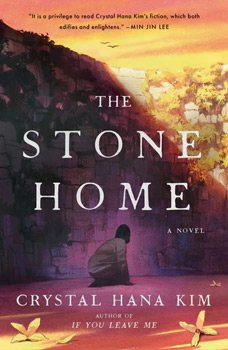
The Stone Home by Crystal Hana Kim
A moving family drama and coming-of-age story revealing a dark corner of South Korean history.
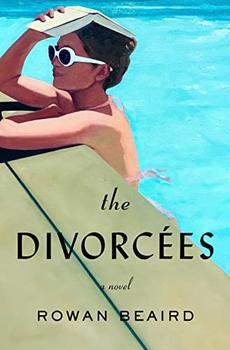
The Divorcees by Rowan Beaird
A "delicious" debut novel set at a 1950s Reno divorce ranch about the complex friendships between women who dare to imagine a different future.
Who Said...
The most successful people are those who are good at plan B
Click Here to find out who said this, as well as discovering other famous literary quotes!
Solve this clue:
and be entered to win..
Your guide to exceptional books
BookBrowse seeks out and recommends the best in contemporary fiction and nonfiction—books that not only engage and entertain but also deepen our understanding of ourselves and the world around us.
Subscribe to receive some of our best reviews, "beyond the book" articles, book club info and giveaways by email.
- $ 0.00 0 items
When the New York Times Book Review Panned the Classics
Some of today’s best-loved books — think “Catch-22,” “Tender Is the Night” and even “Anne of Green Gables” — had a rocky reception in our pages. Read more
(We earn a small commission if you click above and buy the book at Bookshop.org)

- American History
- Animals & Nature
- Art & Photography
- Books on Books
- Children's Books
- Crafts & Hobbies
- Drama & Plays
- Erotica & Curiosa
- Instruction
- Large Print
- Literature & General Fiction
- Miscellaneous Nonfiction
- Mystery & Crime
- New Arrivals
- Science Fiction
- Transportation
- Travel & Adventure
- Uncategorized
- Western Americana
- World History
- ‘What Happened to Ruthy Ramirez’ wins the PEN/Faulkner Award for Fiction
- John Barth, Writer Who Pushed Storytelling’s Limits, Dies at 93
- ‘City in Ruins’ by Don Winslow
- ‘Ripley’ Series Debuts April 4 on Netflix
- Simon & Schuster Turns 100
- February 2024
- January 2024
- December 2023
- November 2023
- October 2023
- September 2023
- August 2023
- February 2023
- January 2023
- December 2022
- November 2022
- October 2022
- September 2022
- August 2022
- February 2022
- January 2022
- December 2021
- November 2021
- October 2021
- September 2021
- August 2021
- Entries feed
- Comments feed
- WordPress.org
12 Classic Books That Got Horrible Reviews When They First Came Out

Reviewers are tasked with the daunting challenge of critically assessing a work's artistic merit, and determining whether a book is worth readers' valuable time. They are often also expected to predict -- or influence -- a novel's future, an assignment that may be impossible to fulfill with complete accuracy. Which is one reason why the art of the negative review has been called into question recently -- not only do writers need our support, there's also often a dissonance between critical reception and, say, Goodreads' crowd-sourced opinions. The Goldfinch is just one recent example of a title that failed to garner the support of top reviewers, but charmed book lovers (not to mention the 2014 Pulitzer judges) nevertheless.
Donna Tartt was preceded by a slew of talented writers whose works were initially snubbed by critics. Fitzgerald's Gatsby (y'know -- the Great one?) was originally panned as "obviously unimportant," and Brave New World was once said to be "heavy-handed propaganda." Yikes! Below are 12 classic books that once received bad reviews:
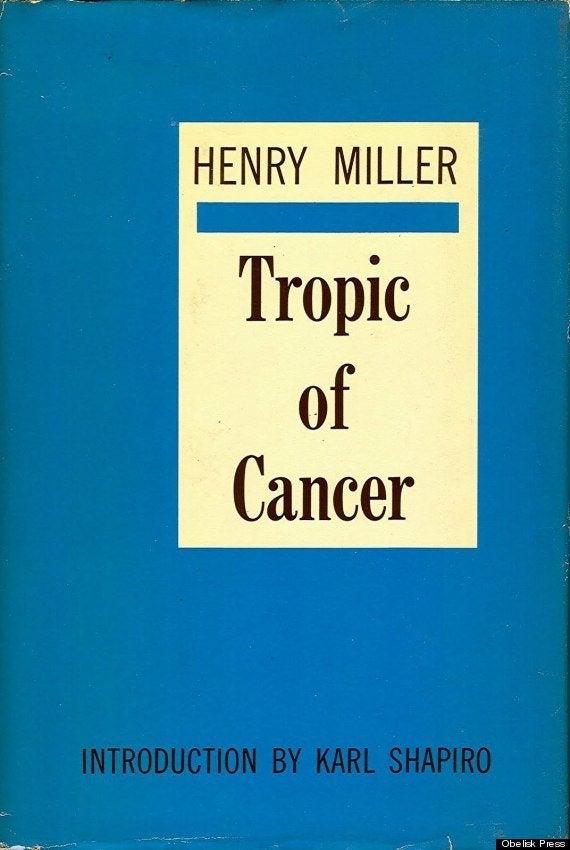
Support HuffPost
Our 2024 coverage needs you, your loyalty means the world to us.
At HuffPost, we believe that everyone needs high-quality journalism, but we understand that not everyone can afford to pay for expensive news subscriptions. That is why we are committed to providing deeply reported, carefully fact-checked news that is freely accessible to everyone.
Whether you come to HuffPost for updates on the 2024 presidential race, hard-hitting investigations into critical issues facing our country today, or trending stories that make you laugh, we appreciate you. The truth is, news costs money to produce, and we are proud that we have never put our stories behind an expensive paywall.
Would you join us to help keep our stories free for all? Your contribution of as little as $2 will go a long way.
As Americans head to the polls in 2024, the very future of our country is at stake. At HuffPost, we believe that a free press is critical to creating well-informed voters. That's why our journalism is free for everyone, even though other newsrooms retreat behind expensive paywalls.
Our journalists will continue to cover the twists and turns during this historic presidential election. With your help, we'll bring you hard-hitting investigations, well-researched analysis and timely takes you can't find elsewhere. Reporting in this current political climate is a responsibility we do not take lightly, and we thank you for your support.
Contribute as little as $2 to keep our news free for all.
Dear HuffPost Reader
Thank you for your past contribution to HuffPost. We are sincerely grateful for readers like you who help us ensure that we can keep our journalism free for everyone.
The stakes are high this year, and our 2024 coverage could use continued support. Would you consider becoming a regular HuffPost contributor?
The stakes are high this year, and our 2024 coverage could use continued support. If circumstances have changed since you last contributed, we hope you’ll consider contributing to HuffPost once more.
Already contributed? Log in to hide these messages.
Before You Go
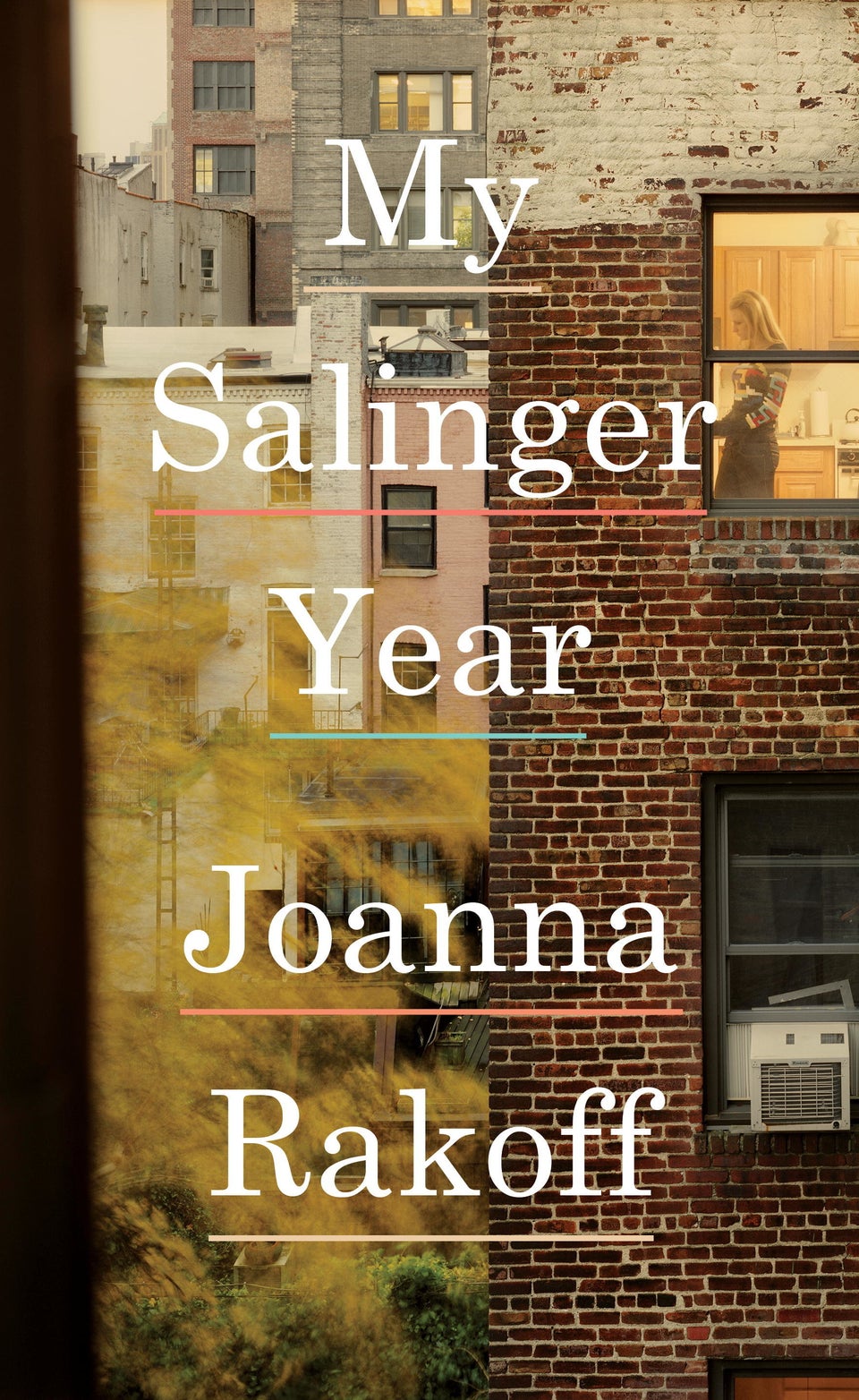
10 Books That Are Dying For A Sequel
Popular in the community, from our partner, more in books.
Lightlynews.com
When the Times Book Review Panned the Classics
In the autumn of 1901, Gustavus Hindman Miller, a division retailer proprietor in Chattanooga, Tenn., was getting ready to embark on a brand new chapter: life as a first-time writer. Mr. Miller knew the affect a positive evaluate from The New York Times may have on the fortunes of a author, so he wrote to the paper’s writer, Adolph S. Ochs, in hopes of building some good will for his challenge — a greater than 600-page quantity titled “What’s in a Dream?”
“Before requesting the publishers to ship a duplicate to you,” Mr. Miller wrote, “I want to have your assurance that it’s going to obtain a pleasant discover.”
Mr. Miller had purpose to be cautious. Even then, a evaluate from The Times may seal the destiny of a e book, and, if the reviewer didn’t just like the work in query, they may very well be ruthless. Reviews on the time weren’t signed — The Times didn’t begin requiring bylines on them till 1924 — and writers may use the cloak of anonymity to be as brutal as they wished.
In his response to Mr. Miller, Mr. Ochs was sympathetic, however agency. “In such issues, as you’ll readily perceive, I don’t intervene: actually can’t accomplish that with out completely demoralizing our group,” he wrote. “Our excessive standing as to the literary character of The Times is as a result of utmost freedom given for the sincere expression of the opinion of the writers.” (The Times did evaluate Mr. Miller’s e book — albeit in a quick, and never very flattering, piece.)
Once reviewers started placing their names on their critiques, there was incentive for his or her assessments, even when detrimental, to be extra nuanced. But that hasn’t stopped the Book Review from panning books it deemed failures — a few of which have gone on to grow to be beloved classics, curriculum staples and capital-G “Great Works” of literature.
These books could also be famend now, however after they first appeared within the pages of the Book Review, they have been dismissed as unoriginal, weak and even unreadable.
‘Sister Carrie,’ by Theodore Dreiser
“It is a e book one can very effectively get alongside with out studying.” Unsigned, May 25, 1907
‘The Metropolis,’ by Upton Sinclair
“Mr. Upton Sinclair’s new e book isn’t vital, it isn’t literature, it isn’t ‘a very good story.’ To say of it that it has a sneer on each web page, and on many an incendiary utterance, could be giving the writer an excessive amount of credit score. … It has all been performed, and significantly better.” Unsigned, March 14, 1908
‘Howards End,’ by E.M. Forster
“As a social thinker, evidently, Mr. Edward M. Forster has not but arrived at any very constructive convictions. … He evinces neither energy nor inclination to come back to grips with any important human downside.” Unsigned, Feb. 19, 1911
‘Nausea,’ by Jean-Paul Sartre. Translated by Lloyd Alexander.
“Whether, from the perspective of literature, ‘La Nausée’ was value translating in any respect is one other query. It belongs to that tense-looking however actually very unfastened sort of writing, which has been popularized by many second-raters … Somewhere behind looms Dostoevsky at his worst.” Reviewed by Vladimir Nabokov, April 24, 1949
Some writers who would go on to be lauded by The Times for his or her literary prowess didn’t obtain a heat welcome the primary time they have been reviewed.
‘The Voyage Out,’ by Virginia Woolf
“Aside from a sure cleverness — which, being multi function key, palls on one after going by 100 pages of it — there may be little on this providing to make it stand out from the ruck of mediocre novels which make far much less literary pretension. As for the story itself, it’s painfully missing, each in coherency and narrative curiosity.” Unsigned, June 13, 1920
‘Other Voices, Other Rooms,’ by Truman Capote
“The story of Joel Knox didn’t have to be advised, besides to get it out of the writer’s system.” Reviewed by Carlos Baker, Jan. 18, 1948
Your Guide to Fall Reading
Whether you need biographies, novels or essay collections, we might help you discover your subsequent e book to learn. Here are 57 titles to get you began.
New novels from Jonathan Franzen, Tiphanie Yanique and Gary Shteyngart are on the best way.Prefer nonfiction? Look for these essay collections, an exploration of the Marvel Comics universe and extra.Get to know your favourite actors and artists with these titles.Six new books take up the pandemic, #MeToo and different well timed matters.Five biographies dive into the lives of Pablo Picasso, Oscar Wilde and extra.Or hear it straight from the authors: Check out these seven memoirs.
Other authors suffered from the burden of comparisons to their earlier work.
‘Tender is the Night,’ by F. Scott Fitzgerald
“Bad information is finest blurted out directly: ‘Tender Is the Night’ is a disappointment. Though it shows Mr. Fitzgerald’s most participating qualities, it makes his weaknesses seem ineradicable, for they’re current in equal measure and in undiminished kind. … His new e book is intelligent and brilliantly surfaced, however it isn’t the work of a clever and mature novelist.” Reviewed by J. Donald Adams, April 15, 1934
At instances, it appeared the Book Review had it out for sure writers — together with the novelist Henry James, who had a very tough run within the early 20th century.
‘The Golden Bowl,’ by Henry James
“In ‘The Golden Bowl’ we discover, standing for subtlety, a type of stressed finicking inquisitiveness, a flutter of aimless conjecture, resembling may fall to a village spinster in a ‘division retailer.’ … How like historical and tedious cronies the ‘wonderfullys’ and ‘preciselys’ and ‘adequatelys’ and ‘competentlys’ flip up on these pages — as a rule in locations the place no self-respecting adverb would select to be found.” Reviewed by H.W. Boynton, Nov. 26, 1904
‘The Outcry,’ by Henry James
“Mr. James nonetheless refuses, to make certain, to put in writing the English language because the masters of that language not lower than the plain folks have been content material to make use of it for some centuries. He nonetheless pointedly declines to use that fastidious vital sense of his to his personal tortured diction. He has performed nothing to shake himself freed from the horrible fascination of sure little phrases which have mounted his creativeness with a fishy eye and creep into innumerable sentences the place they don’t seem to be needed.” Unsigned, Oct. 29, 1911
It’s one factor to criticize an writer’s work. It’s fairly one other to carry their face into the matter.
‘Plays: Pleasant and Unpleasant,’ by George Bernard Shaw
“A placing portrait of the writer serves as frontispiece in Vol. 1. His face is lengthy and slim, the forehead excessive, the eyes (it strikes one who has seen no different likeness of Shaw) shifty, the nostril giant, broad and blunt on the tip, the hair and beard scant. Not a good-looking man, certainly, and one who, aside from the oddity of his costume and his views, and the bizarre alternatives he has loved to publicly exhibit each, would by no means have attracted a lot discover.” Unsigned, June 18, 1898
Even some now-beloved works of kids’s literature weren’t spared.
‘Anne of Green Gables,’ by L.M. Montgomery
“The writer undoubtedly meant her [the book’s protagonist, Anne Shirley] to be queer, however she is altogether too queer … She spoiled the writer’s plan on the very outset and significantly marred a narrative that had in it quaint and charming prospects. The writer’s possible intention was to exhibit a novel improvement on this little asylum waif, however there is no such thing as a actual distinction between the woman on the finish of the story and the one firstly of it.” Unsigned, July 18, 1908
‘Blueberries for Sal,’ by Robert McCloskey
“The endpapers include the type of humorous element which has helped make a perennial favourite of ‘Make Way for Ducklings,’ and which is missing in the remainder of this new e book’s pages. The slight story and its setting, which is proscribed to 1 aspect or the opposite of a hill, scarcely appears to warrant such expansive and costly remedy.” Reviewed by Gladys Crofoot Castor, Oct. 24, 1948
As their names began to be affixed to their critiques, reviewers have been extra inclined to supply nuanced analyses.
‘The Reef,’ by Edith Wharton
“Mrs. Wharton … is sort of diabolically intelligent in arranging her conspiracies in opposition to the peace of thoughts of her characters, and in opposition to the deadly disposition of the reader to throw books down with out ending them. However, it isn’t by the story that she avails this time. The story is fairly conspicuously a failure.” Reviewed by H.I. Brock, Nov. 24, 1912
‘Catch-22,’ by Joseph Heller
“‘Catch-22’ has a lot ardour, comedian and fervent, nevertheless it gasps for need of craft and sensibility. … Its writer, Joseph Heller, is sort of a good painter who decides to throw all of the concepts in his sketchbooks onto one canvas, counting on their allure and shock to compensate for the dearth of design.” Reviewed by Richard G. Stern, Oct. 22, 1961
‘Fear of Flying,’ by Erica Jong
“There is a few nice humor within the e book, however usually Isadora’s condescension and self-consciousness scale back the expertise for the reader. Adrian says insightfully, ‘You and Bennett do appear to whine an terrible lot.’ It is the whining that will get in the best way of this in any other case energetic, bawdy, well-conceived first novel.” Reviewed by Terry Stokes, Nov. 11, 1973
And typically, the Book Review’s predictions have been simply plain fallacious.
‘A Is for Alibi,’ by Sue Grafton
“Will the sequence take maintain? This first e book is competent sufficient, however not significantly unique. Miss Grafton makes use of intentionally flat prose in an effort for realism. Kinsey Millhone, not a really attention-grabbing lady, is a cliché-ridden character representing the loneliness and alienation of her male counterparts. … It will take a really uninteresting reader not to determine who the villain is, although Miss Grafton does introduce a shock en route. What is principally fallacious with the e book is that the writing lacks actual aptitude. It isn’t any higher or no worse than the vast majority of associated books, and that’s about all.” Reviewed by Newgate Callendar, May 23, 1982.
Ms. Grafton would go on to put in writing 24 extra installments of her well-known Kinsey Millhone sequence. She died in 2017 earlier than she may full its closing installment, “Z is for Zero.”

7 Great Books THE NEW YORK TIMES PANNED
Jeff O'Neal
Jeff O'Neal is the executive editor of Book Riot and Panels. He also co-hosts The Book Riot Podcast . Follow him on Twitter: @thejeffoneal .
View All posts by Jeff O'Neal
A recent interest in book reviews as a genre led me to Books of the Century: A Hundred Years of Authors, Ideas and Literature from The New York Times Book Review . This volume collects notable pieces from the first 100 years of the NYTBR , including reviews, impressions, letters to the editor, and literary essays. It’s a fascinating look at how book coverage, taste, and discussion have changed since the NYTBR launched in the fall of 1896.
Of particular interest are the things the review got wrong. Commendably, the editors of Books of the Century not only chose to include critical missteps, but they even highlighted them (calling them “Oops!” entries).
Here are a few highlights
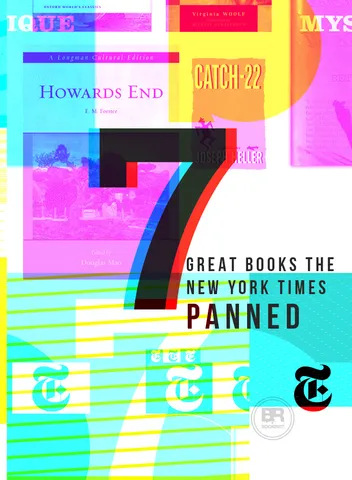
On Henry James’ The Golden Bowl :
It seems to me to present Mr. James at his worst…We find, standing for subtlety, a kind of restless finicking inquisitiveness, a flutter of aimless conjecture, such as might fall to a village spinster in a department store. Mr. James, the prolix, the incoherent, the indecisive; it is of this Mr. James that we carry an impression from The Golden Bowl.
Thoughts: Aside from the shift from the first-person singular to the first-person plural, the notable feature here is that the reviewer seems to mistake James’ interest with that of the characters in The Golden Bowl . To my mind, the “aimless conjecture” and “indecisive” descriptors are aptly applied to the characters rather than James himself. Forgetting that the author’s concerns and interests do not necessarily align with the concerns and interests of the characters is a common reviewing mistake–and rather refreshing to see from the Grey Lady.
__________________________
On E.M. Forster’s Howards End :
As a social philosopher, evidently, Mr. Edward M. Forster has not arrived at very positive convictions. He evinces neither power nor inclination to come to grips with any vital human problem.
Thoughts: Ah, the good old days when one could chastise a writer for not “coming to grips with any vital human problem” unironically (and use clichés like “come to grips” with impunity). Those who love Forster love him in part, I think, for his lack of moral certainty or judgment. That this reviewer expected an identifiable “social philosophy” tells us much about the moment: just seven years later, criticism in this vein would be seen as woefully naive.
On Virginia Woolf’s The Voyage Out :
This English novel, by an English writer, gives promise in its opening chapters of much entertainment. Later, the reader is disappointed. That the author knows her London in its most interesting aspects there can be no doubt. But aside from a certain cleverness–which, being all in one key, palls on one after going through a hundred pages of it–there is little in this offering to make it stand out from the ruck fo mediocre novels which make far less literary pretension.
Thoughts: You can be smug. You can be condescending. And you can even be wrong. But you can’t be all three at once. Or so I thought.
On J.D. Salinger’s The Catcher in the Rye :
This Salinger, he’s a short story guy. And he knows how to write about kids. This book though, it’s too long. Gets kind of monotonous. And he should’ve cut out a lot about these jerks and all that crumby school. They depress me.
Thoughts: It has yet to be shown that satirical impersonation is a viable mode of literary criticism. Usually, the writer comes off as an ironical jackass; this case is no exception. Still, there is a whisper of truth about Salinger’s gift for the short-story, not as a mark against Catcher , but as a foreshadowing of his long publishing drought as he struggled to contain his opus about The Glass family. The unruliness of the novel form itself seemed to be a part of the problem, and this reviewer presciently suggested he stick to the short story.
On Joseph Heller’s Catch-22 :
Catch-22 has much passion, comic and fervent, but it gasps for want of craft and sensibility. If Catch-22 were intended as a commentary novel, such sideswiping of character and action might be taken care of by thematic control. It fails here because half its incidents are farcical and fantastic.
Thoughts: First, I’m not sure you can “gasp for want.” Second, slamming Catch-22 for “craft and sensibility” is a little like panning a Ferrari because there’s not much trunk space: it is just completely and utterly beside the damn point. Third, how delicious that a book criticized for lack of thematic control would itself be a symbol for all the contradictions of late 20th American life. What’s that phrase for either way you’re wrong?
On Betty Friedan’s The Feminine Mystique :
Sweeping generalities, in which this book necessarily abounds, may hold a certain amount of truth but often obscure the deeper issues. It is superficial to blame the “culture” and its handmaidens, the women’s magazines, as she does. What is to stop a woman who is interested in national and international affairs from reading magazines that deal with those subjects?
Thoughts: These would be only moderately obtuse points coming from a freshman. Coming from a NY Times reviewer, they are embarrassing. Also, what is more “superficial” than a leading, block-headed question that sounds like an obvious truth but actually demonstrates the problem?
On Anthony Burgess’ A Clockwork Orange :
With his tongue popping in and out of his cheek, Mr. Burgess satirizes both the sociological and the penal approach to juvenile crime, literary proletarianism, and anything else in his path. Written in a pseudo-criminal cant, A Clockwork Orange is an interesting tour-de-force, though not up to the level of the author’s previous two novels.
Thoughts: Besides not quite liking Clockwork enough, this seems pretty right to me, though the “interesting tour-de-force” is a frustrated phrase. I suspect that satires are particularly easy for a critic to get wrong, since much of what a good satire accomplishes is only apparent in hindsight.

You Might Also Like

- On the Border
- ABC-7 Alert Center
- Military-Fort Bliss
- Watch a Newscast
- ABC-7 StormTrack Doppler
- El Paso Chihuahuas
- Watch Locomotive FC
- Texas Politics
- New Mexico Politics
- Watch Live Events
- Borderland Crimes Podcast
- Community Champions
- Borderland Experts
- Good Vibes Only
- Sunday Funday
- Entertainment
- Events Calendar
- KVIA Careers
- Borderland Careers
- Contact KVIA
- People of ABC-7
- Closed Captioning
- EEO Public Filing
- FCC Public File
- KVIA Jobs and Internships
- Download Our Apps
- History of KVIA ABC-7
- TV Listings
20 panned movies that went on to become cult classics
Tom Cruise and Nicole Kidman embracing in a scene from the film ‘Eyes Wide Shut’.
It’s hard to know exactly what trajectory a film will take in terms of how audiences will receive it when it’s completed and ready to be distributed to theaters. Many films in postproduction will endure test screenings, sure, but that’s still often not an accurate measure of how well a film will actually perform, or who will resonate with it.
Some films like “Barbie” or “Oppenheimer,” for instance, are an immediate hit, while others need a little longer to marinate in the proverbial oven. Such is the case with films like “Wet Hot American Summer” and “Starship Troopers,” two very different films whose satires were somewhat lost on the audiences of the times they debuted. But that doesn’t mean their story is over.
These days, the term “cult classic” tends to get thrown around willy-nilly, or people try to anticipate years in advance whether a recent release will one day receive such a label. But the term serves a very specific function, designating a film that gains a slow-burning fandom as the years drag on after its initial release, thus receiving reevaluation—or simply more fervent enthusiasm—from critics or fans.
Oftentimes, such films go on to become true icons of pop culture, like in the cases of “The Big Lebowski,” “American Psycho,” and “The Room.” As the latter film proves, a cult classic doesn’t necessarily have to be a good movie; it just needs to find an audience.
For this list, Stacker combed through film history’s greatest Cinderella stories to highlight 20 of the most timeless cult classics. To qualify for the list, each film had to receive mixed-to-negative reviews at the time of its release before eventually rising to beloved cult classic status, netting at least a 6.5 rating on IMDb. Read on to see if some of your favorite underdog stories made our list.
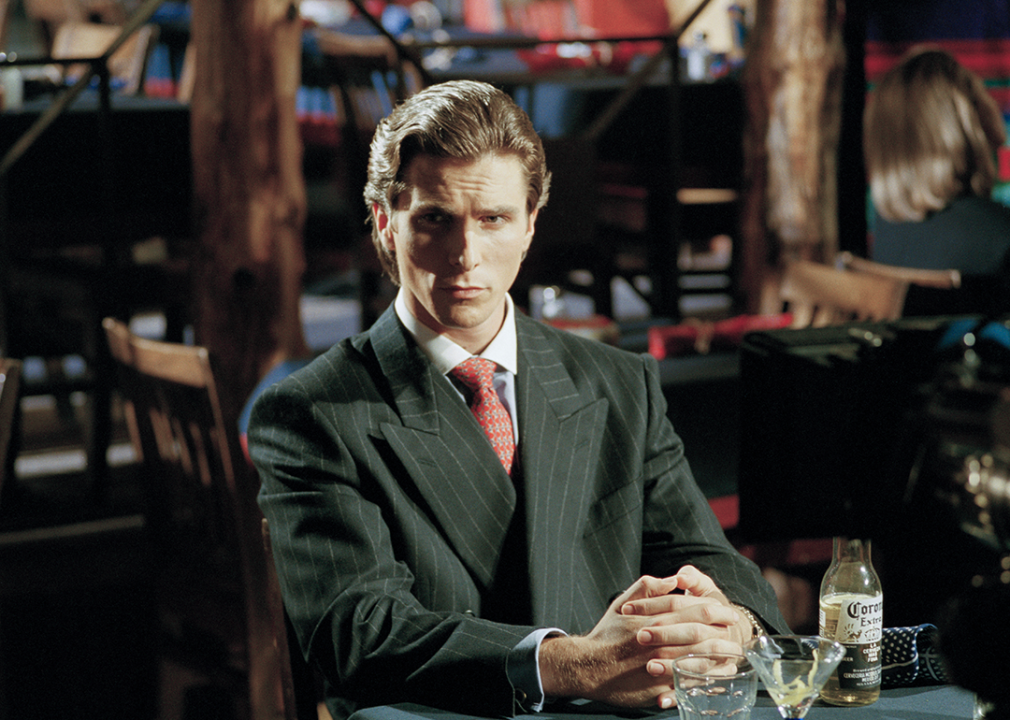

American Psycho (2000)
Christian Bale on the set of American Psycho.
– Director: Mary Harron – IMDb user rating: 7.6 – Run time: 102 minutes
Director Mary Harron’s film adaptation of the Bret Easton Ellis novel of the same name—starring Christian Bale as a bloodthirsty Wall Street yuppie—was polarizing to both critics and audiences when it first premiered at the Sundance Film Festival in 2000. However, it was a box office success, making over $34 million on a mere $7 million budget, and it did receive positive reviews from critics such as Roger Ebert. But in the years following the DVD release, the film has grown even stronger in its fandom and has become somewhat of a staple of modern pop culture, infamous for the way some people are unable to discern its use of satire.
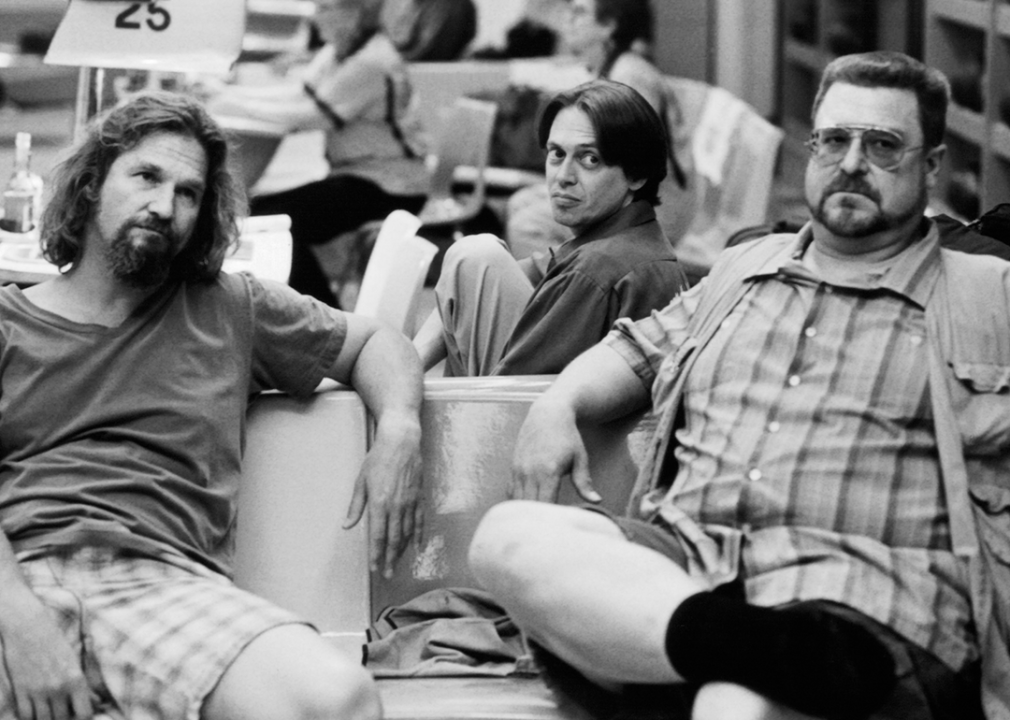
The Big Lebowski (1998)
Jeff Bridges, Steve Buscemi, and John Goodman on the set of ‘The Big Lebowski’.
– Directors: Joel Coen, Ethan Coen – IMDb user rating: 8.1 – Run time: 117 minutes
“The Dude abides” is perhaps one of the most famous quotes in all of cinema history, uttered by Jeff Bridges’ unforgettable performance as ultra-slacker “The Dude.” The film follows Lebowski and his friends as he’s embroiled in a hilarious case of mistaken identity. A modest success on a $15 million budget, “The Big Lebowski” garnered mixed reviews upon release that have only gained positive momentum ever since, with a fan following so passionate that they have their own name .
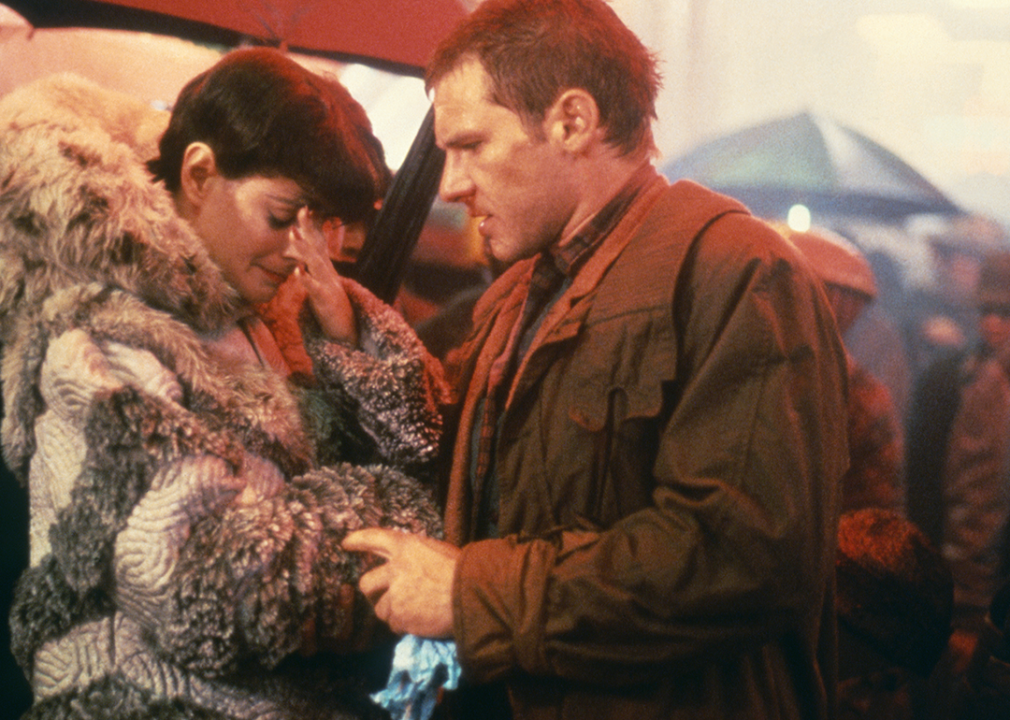
Blade Runner (1982)
Sean Young and Harrison Ford on the set of ‘Blade Runner’.
– Director: Ridley Scott – IMDb user rating: 8.1 – Run time: 117 minutes
Loosely based on a novel by Philip K. Dick, “Blade Runner” follows cop Rick Deckard (Harrison Ford) as he hunts down a contingent of rogue synthetic humans—aka replicants. The film underperformed upon release in 1982, with critics faulting the lack of action and slower pacing; Chris Hicks of Deseret News called it a “far too long thriller with many dull moments” in a review published a decade after the film was released. Yet the film has so grown in cultural influence and popularity that it is often cited as a seminal work in film theory.
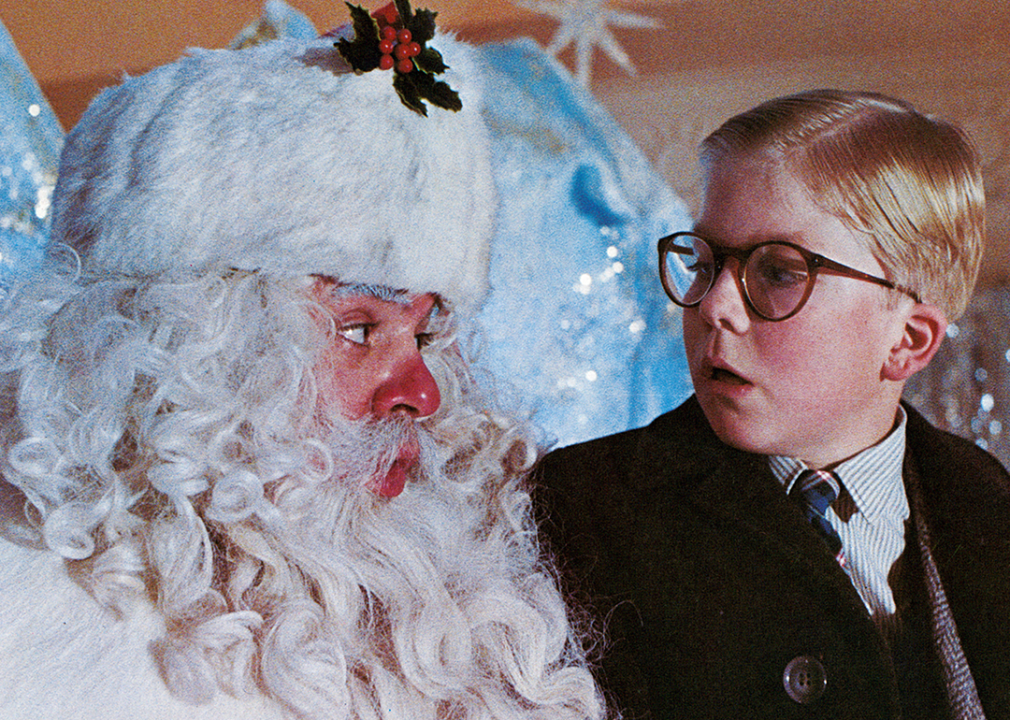
A Christmas Story (1983)
Peter Billingsley sits on Santa’s lap in a scene from the film ‘A Christmas Story’.
– Director: Bob Clark – IMDb user rating: 7.9 – Run time: 93 minutes
The beloved holiday classic “A Christmas Story” was never actually a negatively reviewed film; in fact, upon release, it received positive reviews from critics and was a modest success at the box office. But at the time, it was considered something of an overlooked “sleeper” film, and Roger Ebert posited that the film did not perform quite how it should have at first because “people don’t often go to movies with specific holiday themes.” That has all changed in the 40 years since the film hit theaters, partly helped by yearly 24-hour-long “Christmas Story” marathons on both TBS and TNT dating back to 1997.
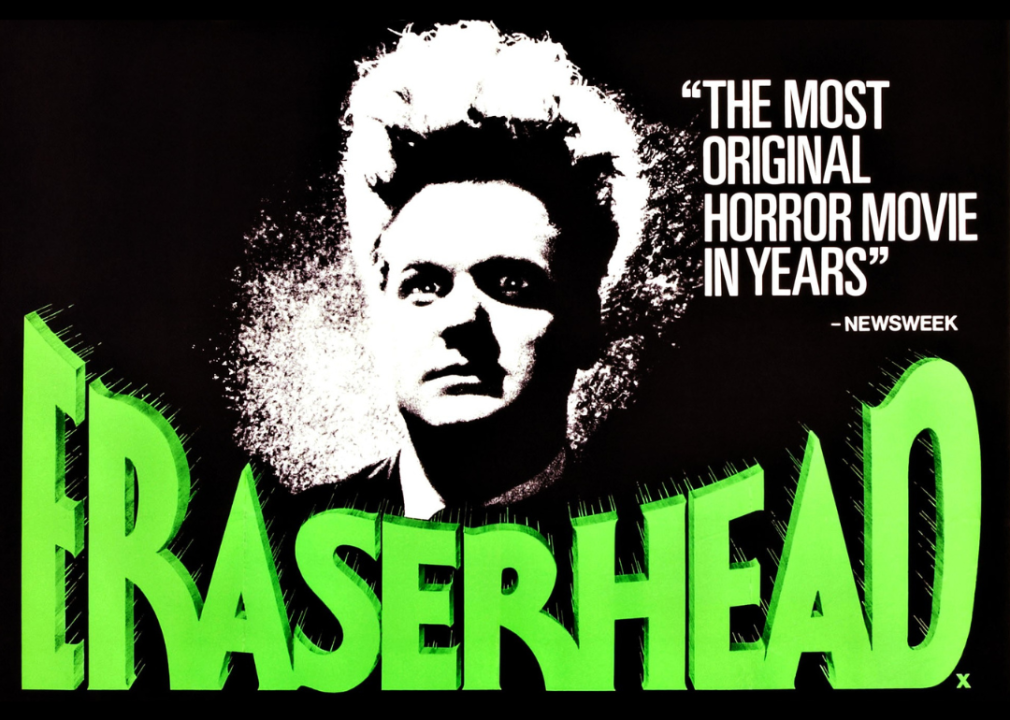
Eraserhead (1977)
Eraserhead movie poster with image of Jack Nance.
– Director: David Lynch – IMDb user rating: 7.3 – Run time: 89 minutes
David Lynch’s feature debut continues to delight and confound viewers after nearly 50 years, but upon its extremely small premiere, it could be considered kind to say it was divisive. The experimental art film about a hapless man left to care for his deformed child inspired initial negative reactions from publications like Variety, which called it a “ sickening bad-taste exercise .” However, it became a popular midnight screening at various theaters during the 1970s and ’80s and ultimately ended up a box office success; from there, it became canonical as a classic of cinema and a particularly iconic cult film. It was inducted into the National Film Registry in 2004.
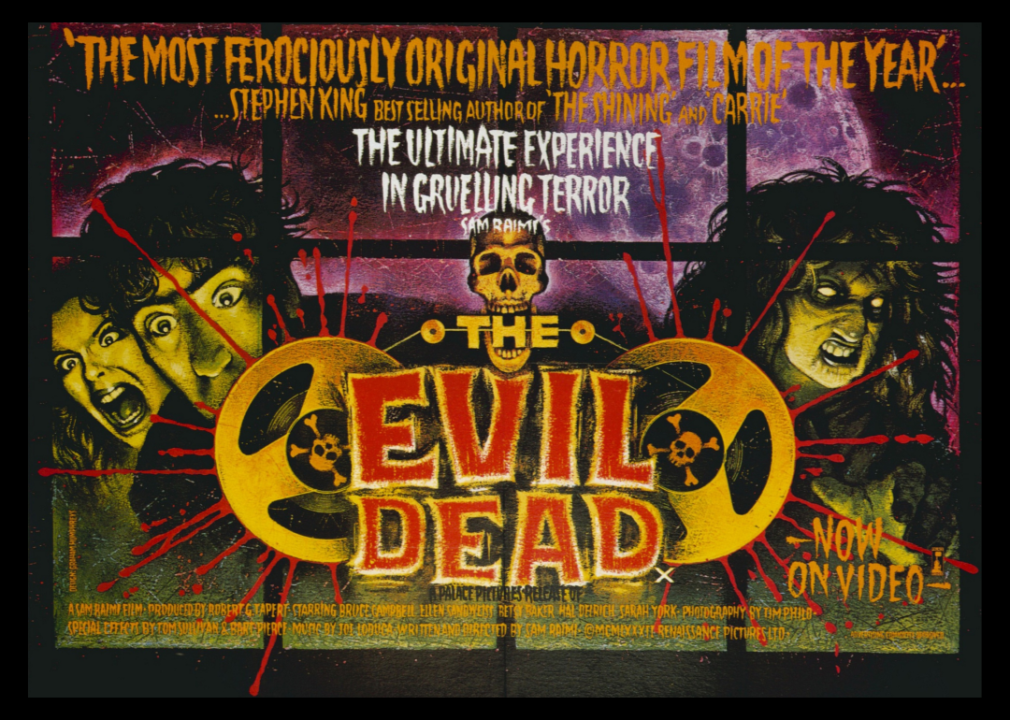
The Evil Dead (1981)
‘The Evil Dead’ movie poster announcing video release.
– Director: Sam Raimi – IMDb user rating: 7.4 – Run time: 85 minutes
Although the first film in the popular horror series didn’t do so hot upon domestic release, it did do well internationally and ultimately earned back its meager $375,000 budget. Critical response to the uber-low budget film—about a group of teens who accidentally unleash demonic forces contained within a cabin in the woods—was also generally positive, but “The Evil Dead” went on to earn itself an incredibly zealous following after the fact. Not just one of the most successful cult films of all time, “The Evil Dead” spawned an entire media franchise including multiple sequels, a spinoff, a remake, a TV series, video games, and comic books.
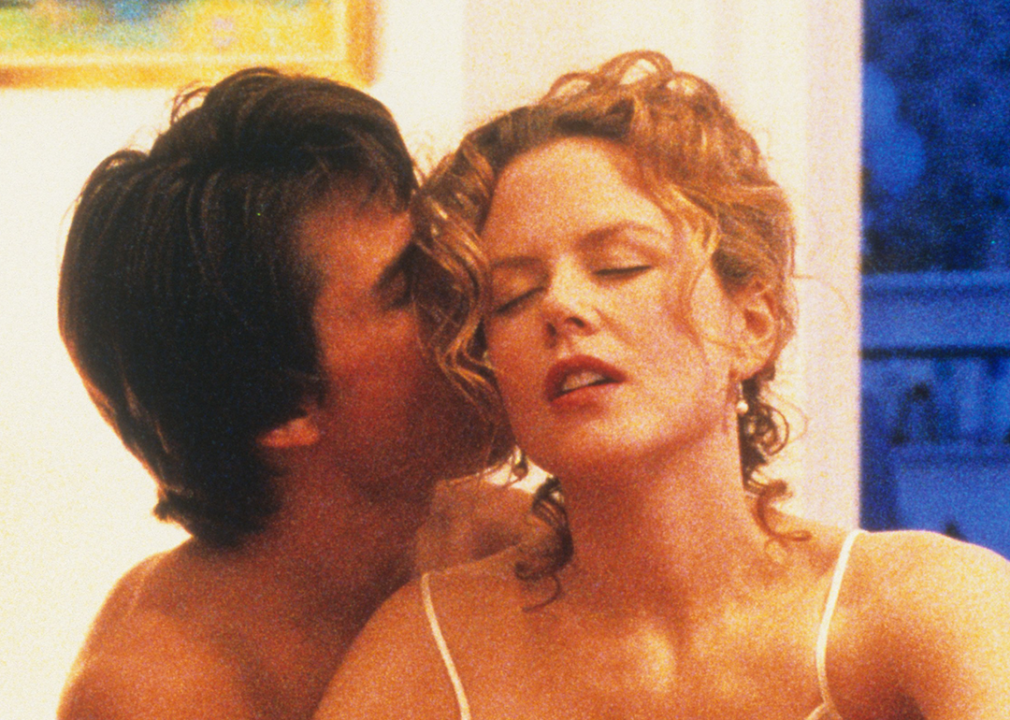
Eyes Wide Shut (1999)
Tom Cruise and Nicole Kidman in a scene from the film ‘Eyes Wide Shut’.
– Director: Stanley Kubrick – IMDb user rating: 7.5 – Run time: 159 minutes
Directing icon Stanley Kubrick’s final film—which was completed after his death from a heart attack during production—was actually his highest-grossing ever, and it received many positive reviews from critics like Janet Maslin of The New York Times and Nathan Rabin of The A.V. Club. However, there were many mixed or unfavorable reviews, and director Martin Scorsese believed that the film was initially misunderstood by many, as well as some still feeling uncertainty over Kubrick’s lack of hand in the film’s completion. It is now often considered by some to be one of Kubrick’s very best.

Fear and Loathing in Las Vegas (1998)
Benicio Del Toro and Johnny Depp in convertible together in a scene from the film ‘Fear And Loathing In Las Vegas’,
– Director: Terry Gilliam – IMDb user rating: 7.5 – Run time: 118 minutes
Based on Hunter S. Thompson’s novel of the same name, Terry Gilliam’s adaptation chronicles two men’s substance-laden journey through Las Vegas and stars Johnny Depp and Benicio Del Toro. Upon release in 1998, the film was a box office flop and polarized critics— The New York Times wrote that it “convey[ed] so little visceral energy that when it’s over you may feel like shrugging your shoulders.” Nevertheless, the film saw reappraisal as the years went on and it gained cult status: writing for The A.V. Club in 2011, Scott Tobias said that it was “one of the most subversive studio films of the ’90s.”
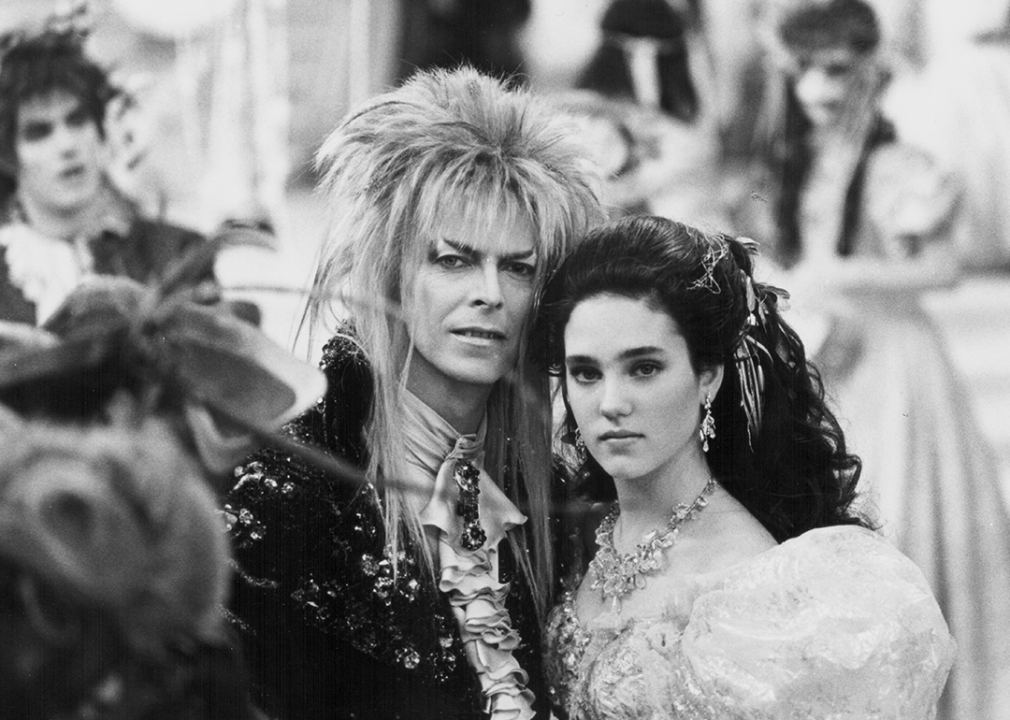
Labyrinth (1986)
David Bowie and Jennifer Connelly in a scene from the movie ‘Labyrinth’.
– Director: Jim Henson – IMDb user rating: 7.3 – Run time: 101 minutes
This musical fantasy film starring David Bowie and featuring puppetry from Jim Henson performed poorly at the domestic box office when it hit theaters almost 40 years ago, although it did very well in the United Kingdom. It didn’t do quite so well with critics, however: Gene Siskel wrote a particularly scathing review, decrying the film as “pathetic” and “visually ugly.” Ultimately, home video release turned this dud into a diamond, and “Labyrinth” has endured as a cult classic—what’s more, Jim Henson was aware that his film had come to be appreciated just before his death in 1990.
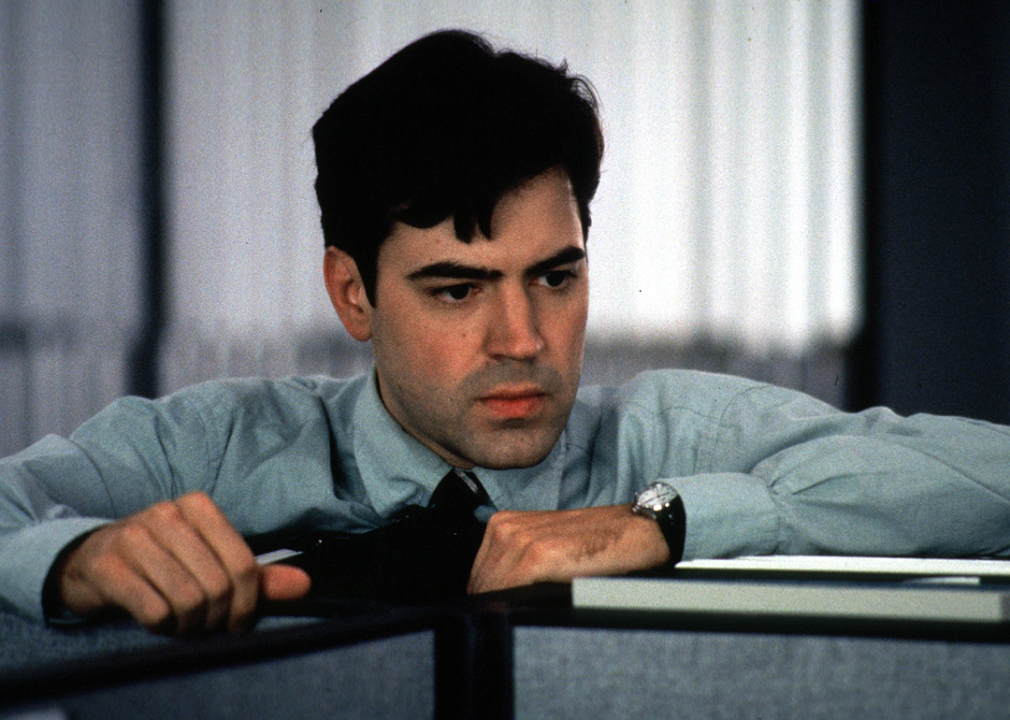
Office Space (1999)
Ron Livingston in ‘Office Space’.
– Director: Mike Judge – IMDb user rating: 7.6 – Run time: 89 minutes
A satire of the soul-sucked office culture of the 1990s, “Office Space” is now a film one’s mind might automatically turn to upon hearing the phrase “cult classic.” But the now-beloved comedy had a shaky start, taking in only $12.2 million compared to its $10 million budget while garnering a mix of positive and middling reviews. In the end, syndicated reruns on Comedy Central starting in 2001, as well as robust home media sales, made “Office Space” into the pop culture icon that it still remains.

Predator (1987)
Carl Weathers and Arnold Schwarzenegger on the set of ‘Predator’.
– Director: John McTiernan – IMDb user rating: 7.8 – Run time: 107 minutes
A reconnaissance team sent to the Guatemalan jungles meets their match with a ruthless alien creature who is intent on hunting them down one by one in this classic action-science fiction hybrid. Opening to mixed reviews from critics but a solid box office intake, “Predator” has since gone on to receive generous critical reevaluation and is now considered a staple of action and sci-fi. It is now a part of a massive media franchise that includes multiple directly related films and a duo of crossover films with the “Alien” franchise.
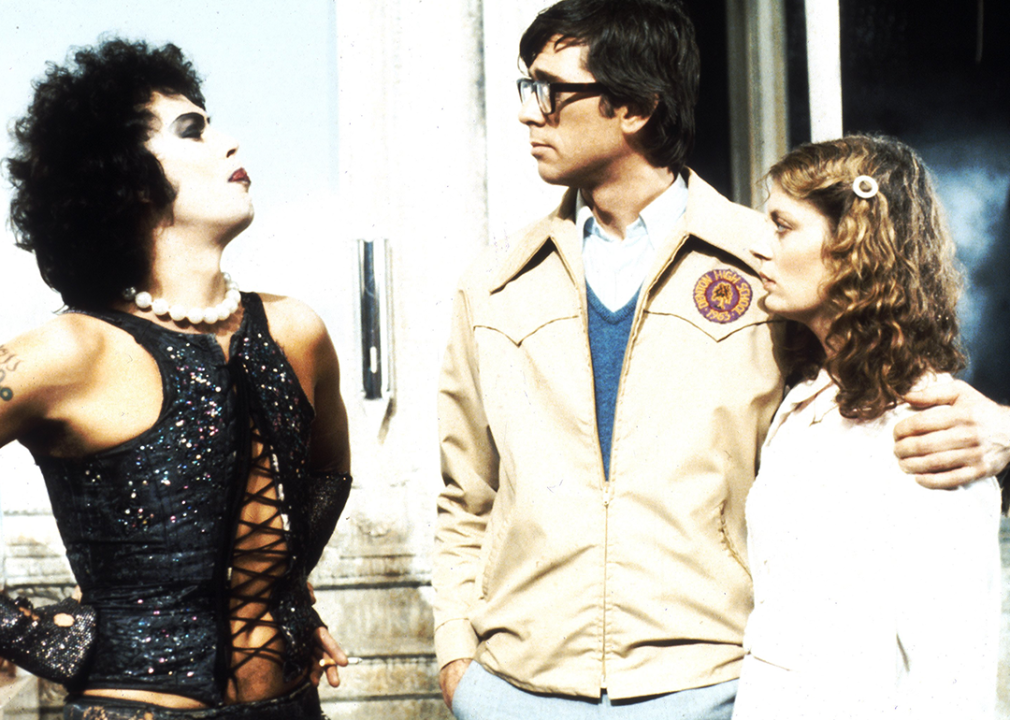
The Rocky Horror Picture Show (1975)
Tim Curry, Barry Bostwick, and Susan Sarandon in scene from ‘The Rocky Horror Picture Show’.
– Director: Jim Sharman – IMDb user rating: 7.4 – Run time: 100 minutes
When a newly married couple’s car breaks down in the middle of nowhere on a dark, stormy night, they turn to the only beacon of hope: a nearby castle, where a party is being held by a mad scientist who ensnares the innocent couple in his plans. The deeply weird, low-budget “Rocky Horror Picture Show” was met with extreme negativity from critics and was actually pulled from theaters due to low turnout. Well, midnight screenings saved the film from obscurity, and it’s now one of the longest-running theatrical runs in history due to its numerous rereleases, many of which include passionate audience participation.

The Room (2003)
Tommy Wiseau poses next to a poster for ‘The Room’.
– Director: Tommy Wiseau – IMDb user rating: 3.6 – Run time: 99 minutes
It might seem strange that a film that is often cited as one of the worst ever made could engender such an ardent fanbase, but Tommy Wiseau’s “The Room” is just that. The brainchild of a profoundly eccentric man created one of the weirdest movie experiences of all time, and in doing so it quickly brought with it a cult following that has endured over two decades. “The Room,” which has a number of A-lister celebrity fans, now enjoys frequent appearances on the midnight screening circuit where audiences partake in a tradition of throwing spoons at the screen.
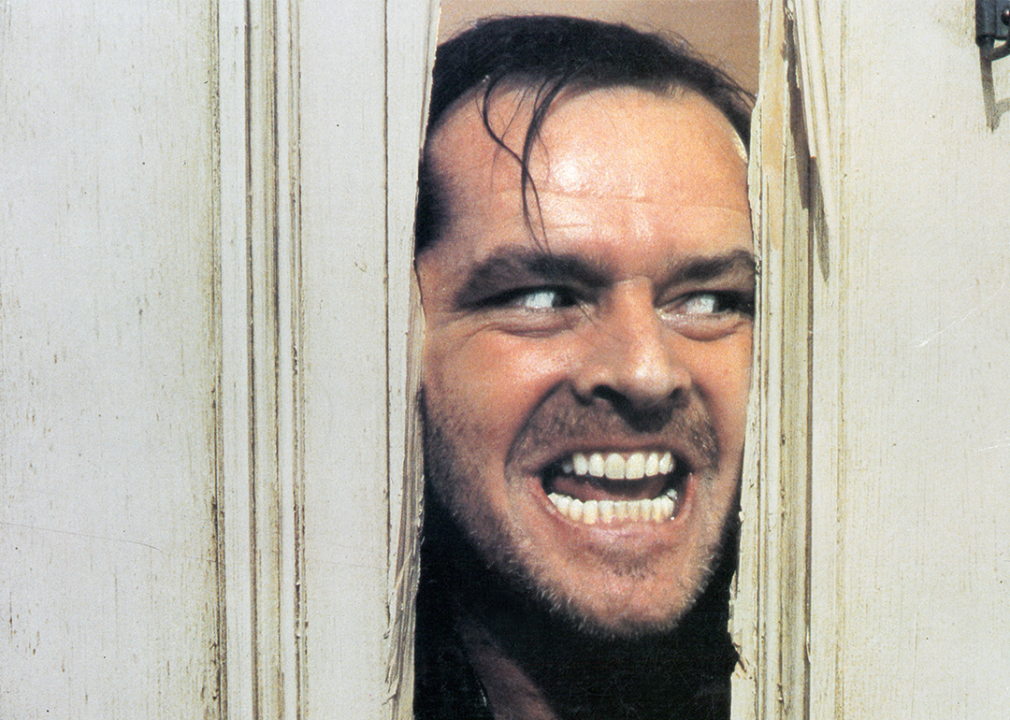
The Shining (1980)
Jack Nicholson in a scene from ‘The Shining’.
– Director: Stanley Kubrick – IMDb user rating: 8.4 – Run time: 146 minutes
During his stay taking care of the Overlook Hotel, father Jack Torrance slowly loses his mind to the whims of the haunted establishment. One of Stanley Kubrick’s most celebrated films, and one of the most iconic horror films of all time, “The Shining” debuted to mixed reactions from critics—specifically, the author of the source novel Stephen King notoriously hated Kubrick’s vision for his story.
The film even received two (controversial) Razzie nominations for Worst Director for Kubrick and Worst Actress for Shelley Duvall (the latter of which went on to be voided); however, with later critical reappraisal, the rest is history, and “The Shining” now enjoys its status as an icon of pop culture.

Starship Troopers (1997)
Casper Van Dien, Dina Meyer, and Michael Ironside on the set of ‘Starship Troopers’.
– Director: Paul Verhoeven – IMDb user rating: 7.3 – Run time: 129 minutes
When it was released back in 1997, Paul Verhoeven’s sci-fi satire was met with swift critical backlash for its perceived endorsement of fascism, among other criticisms of the film, and initial box office success declined quickly. But in the years following that negative release, “Starship Troopers” has finally been understood for the satire that it is, and critical reevaluations of the film abound— such as from The Atlantic , which wrote that the film “critiques the military-industrial complex, the jingoism of American foreign policy, and a culture that privileges reactionary violence over sensitivity and reason.” Many actors and directors consider “Starship Troopers” one of the best films of the ’90s.

The Thing (1982)
Kurt Russell on the set of ‘The Thing’.
– Director: John Carpenter – IMDb user rating: 8.2 – Run time: 109 minutes
It’s hard to imagine that a horror classic such as “The Thing” was considered “instant junk” upon release in 1982, but its theatrical debut was met with immediate backlash, and it didn’t perform too well with crowds, either. The film adaptation of the 1938 novella “Who Goes There?” faced stiff competition against the optimistic, family-friendly “E.T. the Extra-Terrestrial,” but once it received home video release it began to grow its cult following and eventually received reappraisal. It is frequently cited as one of the best sci-fi horror films of all time and has inspired a variety of spinoff merchandise, including a prequel film in 2011.
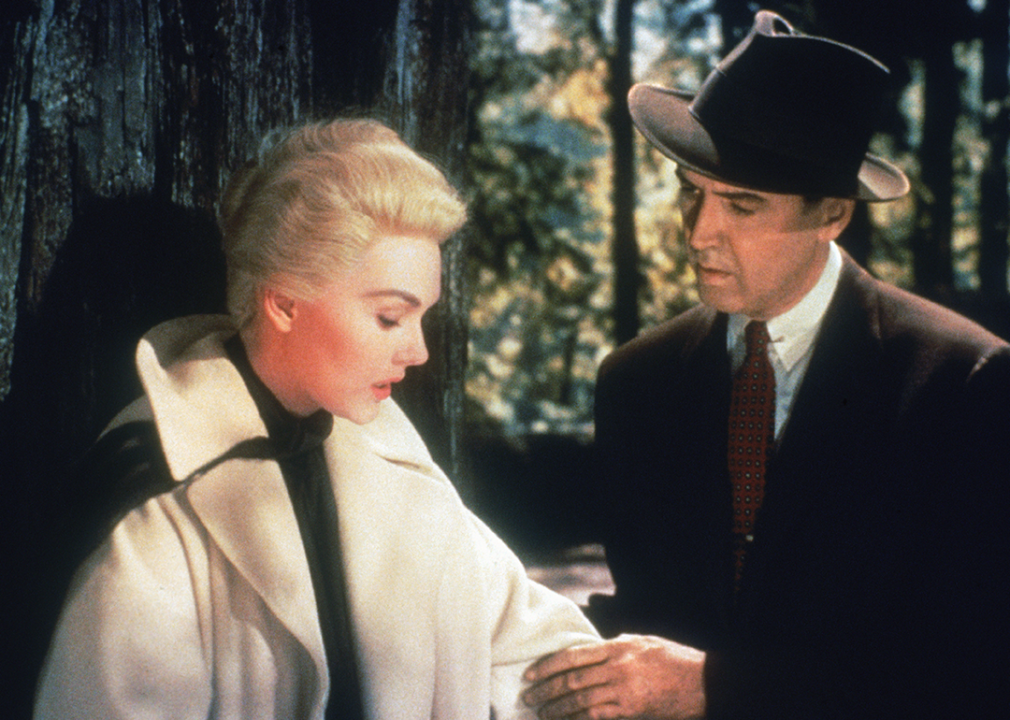
Vertigo (1958)
James Stewart and Kim Novak in a scene from ‘Vertigo’.
– Director: Alfred Hitchcock – IMDb user rating: 8.3 – Run time: 128 minutes
Even the master of suspense himself had a flop every now and then, including “Vertigo,” a film that previously topped the Sight and Sound “Greatest Films of All Time” list until 2022. Receiving very lukewarm reviews from critics and being compared uncharitably to past Hitchcock films, it rose in critics’ esteem as the years went on, and began showing up in the Sight and Sound “Greatest Films of All Time” top 10 list starting in 1982. By 1989, it became one of the first 25 films to be chosen for preservation in the National Film Registry.
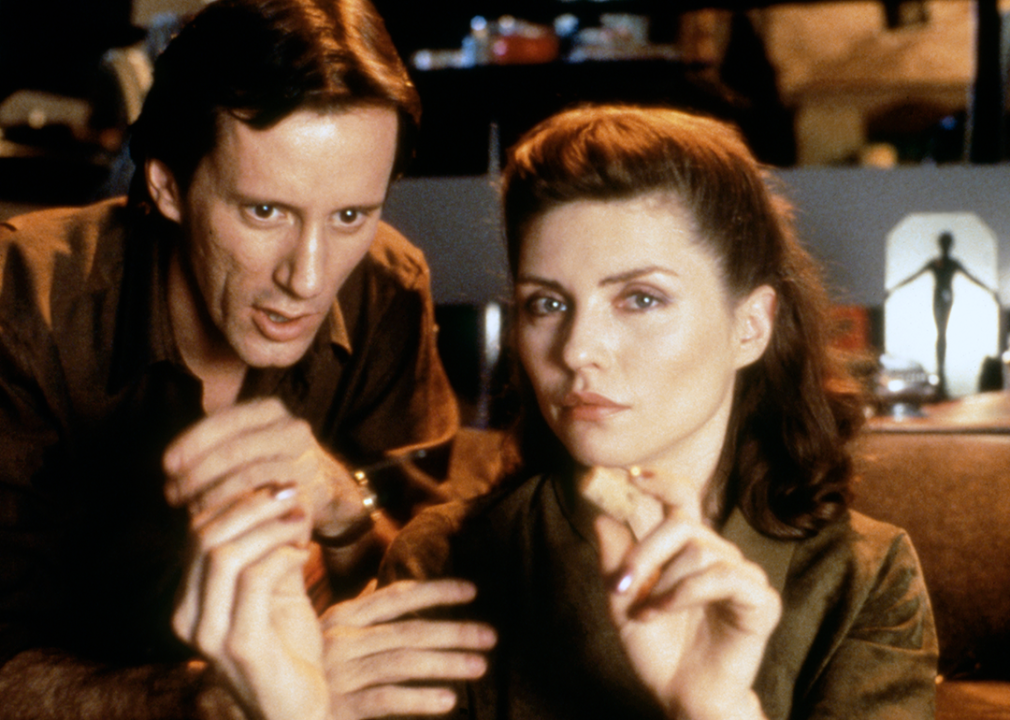
Videodrome (1983)
James Woods and Deborah Harry on the set of ‘Videodrome’.
– Director: David Cronenberg – IMDb user rating: 7.2 – Run time: 87 minutes
The body horror auteur has never been a stranger to controversy due to his films, and perhaps it’s ironic that David Cronenberg’s “Videodrome” was the director’s first film to receive studio backing and his highest budget ever at the time, only to turn out a complete box office bomb. Although some critics at the time managed to be on the film’s wavelength, audiences were a little slower in coming to appreciate the film about the CEO of a television station who attempts to uncover the source of a broadcast signal that airs snuff films. It’s now considered one of the director’s best and a crucial film in the body horror genre.
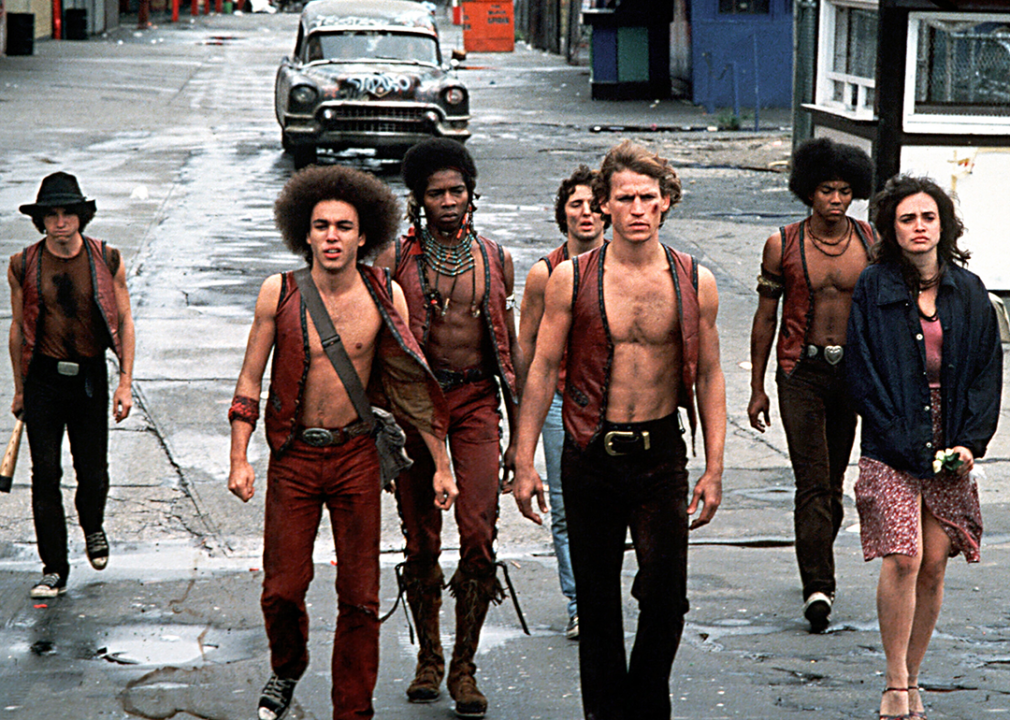
The Warriors (1979)
Tom McKitterick, Marcelino Sanchez, David Harris, Terry Michos, Michael Beck, Brian Tyler, and Deborah Van Valkenburgh in a scene from ‘The Warriors’.
– Director: Walter Hill – IMDb user rating: 7.5 – Run time: 93 minutes
Walter Hill’s action thriller—about a fictional New York street gang’s journey home from the Bronx to Coney Island, all while they’re framed for murder—was linked to a number of acts of violence towards moviegoers leaving the film, which Hill speculated was due to gangs coming to see the film and being confronted with rival gangs also there to see the film. In any event, the film turned in a gangbusters performance at the box office, though critics weren’t quite as impressed; in the decades since its release, “The Warriors” has been reevaluated (it currently sits at 88% approval from both critics and audiences on Rotten Tomatoes) and is now considered one of the best cult films of all time.
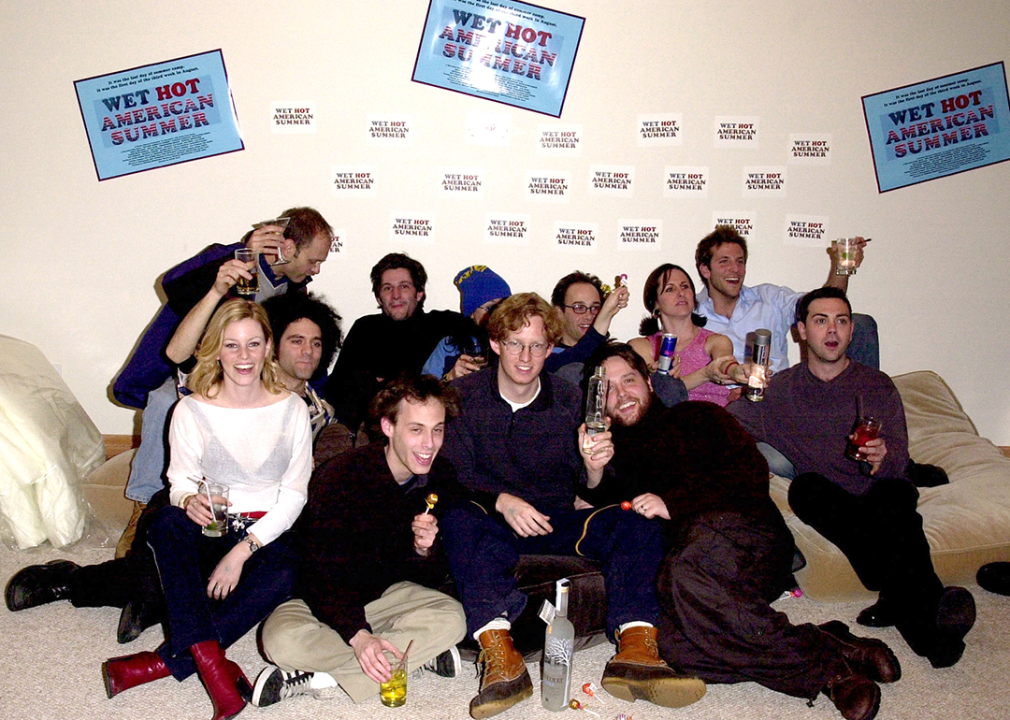
Wet Hot American Summer (2001)
Cast of ‘Wet Hot American Summer’ attend party.
– Director: David Wain – IMDb user rating: 6.5 – Run time: 97 minutes
A satire of ’80s teen sex comedies, the low-budget “Wet Hot American Summer” didn’t even gross $1 million at the box office, and critics were not kind to it either; the film still holds a 38% on Rotten Tomatoes, with early reviews dubbing it “sloppy” with “severely unfunny dialogue.” However, the film’s cult following stemmed from the appreciation of comedy A-listers that ended up boosting the careers of a number of the film’s key players, like Paul Rudd. It became enough of a hit among comedians and fans alike that it spawned two Netflix spinoff series, which were positively received by critics and audiences.
Data reporting by Luke Hicks. Story editing by Cynthia Rebolledo. Copy editing by Tim Bruns.
Jump to comments ↓

Related Articles
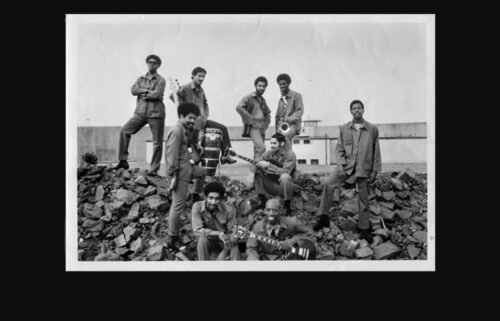
The prison soul band that opened for Stevie Wonder

Survey reveals Hollywood's 10 most popular celebrities
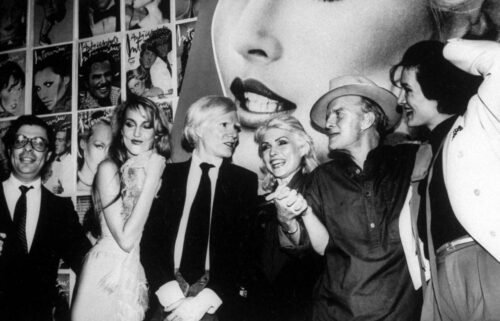
5 celebrities famous for throwing epic parties

10 celebrities who you may not know are serious poker players
KVIA ABC 7 is committed to providing a forum for civil and constructive conversation.
Please keep your comments respectful and relevant. You can review our Community Guidelines by clicking here
If you would like to share a story idea, please submit it here .

When the Times Book Review Panned the Classics
In the fall of 1901, Gustavus Hindman Miller, a department store owner in Chattanooga, Tenn., was preparing to embark on a new chapter: life as a first-time author. Mr. Miller knew the impact a favorable review from The New York Times could have on the fortunes of a writer, so he wrote to the paper’s publisher, Adolph S. Ochs, in hopes of establishing some good will for his project — a more than 600-page volume titled “What’s in a Dream?”
“Before requesting the publishers to send a copy to you,” Mr. Miller wrote, “I would like to have your assurance that it will receive a friendly notice.”
Mr. Miller had reason to be wary. Even then, a review from The Times could seal the fate of a book, and, if the reviewer did not like the work in question, they could be ruthless. Reviews at the time were not signed — The Times didn’t start requiring bylines on them until 1924 — and writers could use the cloak of anonymity to be as brutal as they wished.
In his response to Mr. Miller, Mr. Ochs was sympathetic, but firm. “In such matters, as you will readily understand, I do not interfere: in fact cannot do so without totally demoralizing our organization,” he wrote. “Our high standing as to the literary character of The Times is due to the utmost freedom given for the honest expression of the opinion of the writers.” (The Times did review Mr. Miller’s book — albeit in a brief, and not very flattering, piece.)
Once reviewers began putting their names on their critiques, there was incentive for their assessments, even when negative, to be more nuanced. But that hasn’t stopped the Book Review from panning books it deemed failures — some of which have gone on to become beloved classics, curriculum staples and capital-G “Great Works” of literature.
These books may be renowned now, but when they first appeared in the pages of the Book Review, they were dismissed as unoriginal, weak or even unreadable.
‘Sister Carrie,’ by Theodore Dreiser
“It is a book one can very well get along without reading.” Unsigned, May 25, 1907
‘The Metropolis,’ by Upton Sinclair
“Mr. Upton Sinclair’s new book is not important, it is not literature, it is not ‘a good story.’ To say of it that it has a sneer on every page, and on many an incendiary utterance, might be giving the author too much credit. … It has all been done, and much better.” Unsigned, March 14, 1908
‘Howards End,’ by E.M. Forster
“As a social philosopher, evidently, Mr. Edward M. Forster has not yet arrived at any very positive convictions. … He evinces neither power nor inclination to come to grips with any vital human problem.” Unsigned, Feb. 19, 1911
‘Nausea,’ by Jean-Paul Sartre. Translated by Lloyd Alexander.
“Whether, from the viewpoint of literature, ‘La Nausée’ was worth translating at all is another question. It belongs to that tense-looking but really very loose type of writing, which has been popularized by many second-raters … Somewhere behind looms Dostoevsky at his worst.” Reviewed by Vladimir Nabokov, April 24, 1949
Some writers who would go on to be lauded by The Times for their literary prowess did not receive a warm welcome the first time they were reviewed.
‘The Voyage Out,’ by Virginia Woolf
“Aside from a certain cleverness — which, being all in one key, palls on one after going through a hundred pages of it — there is little in this offering to make it stand out from the ruck of mediocre novels which make far less literary pretension. As for the story itself, it is painfully lacking, both in coherency and narrative interest.” Unsigned, June 13, 1920
‘Other Voices, Other Rooms,’ by Truman Capote
“The story of Joel Knox did not need to be told, except to get it out of the author’s system.” Reviewed by Carlos Baker, Jan. 18, 1948
Other authors suffered from the weight of comparisons to their previous work.
‘Tender is the Night,’ by F. Scott Fitzgerald
“Bad news is best blurted out at once: ‘Tender Is the Night’ is a disappointment. Though it displays Mr. Fitzgerald’s most engaging qualities, it makes his weaknesses appear ineradicable, for they are present in equal measure and in undiminished form. … His new book is clever and brilliantly surfaced, but it is not the work of a wise and mature novelist.” Reviewed by J. Donald Adams, April 15, 1934
At times, it seemed the Book Review had it out for certain writers — including the novelist Henry James, who had a particularly rough run in the early 20th century.
‘The Golden Bowl,’ by Henry James
“In ‘The Golden Bowl’ we find, standing for subtlety, a kind of restless finicking inquisitiveness, a flutter of aimless conjecture, such as might fall to a village spinster in a ‘department store.’ … How like ancient and tedious cronies the ‘wonderfullys’ and ‘preciselys’ and ‘adequatelys’ and ‘competentlys’ turn up on these pages — as a rule in places where no self-respecting adverb would choose to be discovered.” Reviewed by H.W. Boynton, Nov. 26, 1904
‘The Outcry,’ by Henry James
“Mr. James still refuses, to be sure, to write the English language as the masters of that language not less than the plain people have been content to use it for some centuries. He still pointedly declines to apply that fastidious critical sense of his to his own tortured diction. He has done nothing to shake himself free of the horrible fascination of certain little words which have fixed his imagination with a fishy eye and creep into innumerable sentences where they are not wanted.” Unsigned, Oct. 29, 1911
It’s one thing to criticize an author’s work. It’s quite another to bring their face into the matter.
‘Plays: Pleasant and Unpleasant,’ by George Bernard Shaw
“A striking portrait of the author serves as frontispiece in Vol. 1. His face is long and narrow, the brow high, the eyes (it strikes one who has seen no other likeness of Shaw) shifty, the nose large, broad and blunt at the tip, the hair and beard scant. Not a handsome man, surely, and one who, except for the oddity of his dress and his views, and the unusual opportunities he has enjoyed to publicly exhibit both, would never have attracted much notice.” Unsigned, June 18, 1898
Even some now-beloved works of children’s literature were not spared.
‘Anne of Green Gables,’ by L.M. Montgomery
“The author undoubtedly meant her [the book’s protagonist, Anne Shirley] to be queer, but she is altogether too queer … She spoiled the author’s plan at the very outset and greatly marred a story that had in it quaint and charming possibilities. The author’s probable intention was to exhibit a unique development in this little asylum waif, but there is no real difference between the girl at the end of the story and the one at the beginning of it.” Unsigned, July 18, 1908
‘Blueberries for Sal,’ by Robert McCloskey
“The endpapers contain the kind of humorous detail which has helped make a perennial favorite of ‘Make Way for Ducklings,’ and which is lacking in the rest of this new book’s pages. The slight story and its setting, which is limited to one side or the other of a hill, scarcely seems to warrant such expansive and expensive treatment.” Reviewed by Gladys Crofoot Castor, Oct. 24, 1948
As their names started to be affixed to their critiques, reviewers were more inclined to offer nuanced analyses.
‘The Reef,’ by Edith Wharton
“Mrs. Wharton … is almost diabolically clever in arranging her conspiracies against the peace of mind of her characters, and against the fatal disposition of the reader to throw books down without finishing them. However, it is not by the story that she avails this time. The story is rather conspicuously a failure.” Reviewed by H.I. Brock, Nov. 24, 1912
‘Catch-22,’ by Joseph Heller
“‘Catch-22’ has much passion, comic and fervent, but it gasps for want of craft and sensibility. … Its author, Joseph Heller, is like a brilliant painter who decides to throw all the ideas in his sketchbooks onto one canvas, relying on their charm and shock to compensate for the lack of design.” Reviewed by Richard G. Stern, Oct. 22, 1961
‘Fear of Flying,’ by Erica Jong
“There is some great humor in the book, but often Isadora’s condescension and self-consciousness reduce the experience for the reader. Adrian says insightfully, ‘You and Bennett do seem to whine an awful lot.’ It is the whining that gets in the way of this otherwise energetic, bawdy, well-conceived first novel.” Reviewed by Terry Stokes, Nov. 11, 1973
And sometimes, the Book Review’s predictions were just plain wrong.
‘A Is for Alibi,’ by Sue Grafton
“Will the series take hold? This first book is competent enough, but not particularly original. Miss Grafton uses deliberately flat prose in an effort for realism. Kinsey Millhone, not a very interesting woman, is a cliché-ridden character representing the loneliness and alienation of her male counterparts. … It will take a very dull reader not to figure out who the villain is, though Miss Grafton does introduce a surprise en route. What is basically wrong with the book is that the writing lacks real flair. It is no better or no worse than the majority of related books, and that is about all.” Reviewed by Newgate Callendar, May 23, 1982.
Ms. Grafton would go on to write 24 more installments of her famous Kinsey Millhone series. She died in 2017 before she could complete its final installment, “Z is for Zero.”
Sarah Everard Was Falsely Arrested by Killer Before She Was Raped and Murdered
14 new books coming in october, related articles.

Ada Limón Won’t Let Prose Touch the Poetry on Her Shelves

A Journey to the Boot of Italy, With Murder, Romance and Ricotta

A Gender Theorist Who Just Wants Everyone to Get Along

John Barth, novelist who orchestrated literary fantasies, dies at 93
His comic novels and metafictional stories made him a giant of postmodernism.

John Barth, a novelist who crafted labyrinthine, fantastical tales that were at once bawdy and philosophical, placing him on the cutting edge of the postmodern literary movement, died April 2. He was 93.
His death was announced in a statement by Johns Hopkins University in Baltimore, where he was a longtime faculty member. The statement did not say where or how he died.
Mr. Barth was the author of about 20 books, among them the short-story collection “Lost in the Funhouse” (1968), a landmark of experimental fiction, and the comic novels “The Sot-Weed Factor” (1960) and “Giles Goat-Boy” (1966).
The former was included on Time magazine’s 2010 list of the 100 greatest English-language novels, and in 1973 Mr. Barth won a National Book Award for “Chimera,” a collection of three interrelated novellas that retold the mythical stories of Perseus, Bellerophon and Scheherazade. (Mr. Barth, not for the last time, appeared as a character in the work, making a cameo as a smiling genie who offers Scheherazade, or “Sherry,” fresh material for the stories she tells each night.)
Despite such acclaim, Mr. Barth’s books were sometimes criticized by peers as academic, pretentious and willfully obtuse. Where novelist John Updike offered praise, favorably comparing the marital dramas of “Chimera” to his own work about domestic discontent, writer Gore Vidal offered a scathing assessment: Mr. Barth’s books, he said , were “written to be taught, not to be read.”
Mr. Barth was, in fact, for many years a professor, teaching English and creative writing at his alma mater, Johns Hopkins. While he saw himself as a teacher as much as an author, he believed he was writing squarely in the tradition of storytellers such as Homer, Virgil and the imprisoned character of Scheherazade, whose storytelling prowess led her captor to spare her life.
He was, he said, a kind of literary arranger, enacting in literature what he had briefly done in his youth as an orchestrator for a jazz band.
“An arranger is a chap who takes someone else’s melody and turns it to his purpose,” Mr. Barth told the Paris Review in 1985. “For better or worse, my career as a novelist has been that of an arranger. My imagination is most at ease with an old literary convention like the epistolary novel, or a classical myth — received melody lines, so to speak, which I then reorchestrate to my purpose.”
Mr. Barth’s “reorchestrations” made him one of the foremost practitioners of postmodern literature, a movement that he helped define as the blending of straightforward storytelling techniques with the involuted, playful, frequently self-referential devices of modernists such as James Joyce and Samuel Beckett.
He was perhaps at his postmodern best — or worst, depending on one’s tastes — in “Lost in the Funhouse,” the title piece of his first story collection and a formative influence on the late David Foster Wallace .
The story shifts seamlessly between a traditional narrative — about a young boy’s trip to a hall of mirrors, located at a beach resort near Mr. Barth’s hometown on the Eastern Shore of Maryland — and observations on the nature of narrative itself.
A story, Mr. Barth seemed to suggest, was itself a kind of funhouse, one in which readers are made to believe that they are experiencing something real and true, rather than an artifice constructed out of words on a page.
“So far there’s been no real dialogue, very little sensory detail, and nothing in the way of a theme ,” the story’s narrator observes early in the piece. “And a long time has gone by already without anything happening; it makes a person wonder. We haven’t even reached Ocean City yet: we will never get out of the funhouse.”
John Simmons Barth, whose father owned a candy store, was born in Cambridge, on Maryland’s Eastern Shore, on May 27, 1930. He went by Jack, complementing his twin sister, Jill.
Mr. Barth played the drums in a local jazz group and briefly studied orchestration at Juilliard music school in New York before transferring to Johns Hopkins.
“As an illiterate undergraduate,” he once told the New York Herald Tribune, “I worked off part of my tuition filing books in the Classics Library at Johns Hopkins, which included the stacks of the Oriental Seminary. One was permitted to get lost for hours in that splendiferous labyrinth and intoxicate, engorge oneself with story.”
His interest was in narrative: sprawling epics such as “The Ocean of the Rivers of Story,” a multivolume work originally written in Sanskrit; Giovanni Boccaccio’s “The Decameron”; and Richard Burton’s translation of “The Thousand Nights and a Night,” which taught him how to pace epics and led to a fascination with stories within stories.
After graduating from Johns Hopkins with a bachelor’s degree in 1951 and a master’s in English in 1952, he planned a trilogy of short realist novels to address themes of suicide and nihilism.
The first two volumes — “The Floating Opera” (1956) and “The End of the Road” (1958) — were well-received but left Mr. Barth feeling unsatisfied. While teaching at Penn State, he later told The Washington Post, “I realized that realism was tying my hands.”
He responded by ditching plans for his third novel and — finding the playful, parodic voice that dominated most of his later work — launching himself to literature’s experimental fringe.
The result was “The Sot-Weed Factor,” a darkly funny, 800-page satire of Colonial Maryland that drew inspiration from a 1708 poem of the same name. In Mr. Barth’s telling, the poem’s author — a “rangy, gangling flitch called Ebenezer Cooke” — was a naive idealist grappling with the growing awareness that human existence is grim, fraught with violence and lacking in apparent purpose and meaning.
Written in the style of picaresque novels such as Henry Fielding’s “Tom Jones” and Laurence Sterne’s “Tristram Shandy,” the novel was “not for all palates,” the novelist and critic Edmund Fuller wrote in a review for the New York Times: “The plot itself is a parody in its incalculable complexity; a tissue of intrigue and counter-intrigue, ludicrous mock-heroic adventure, masquerades and confusions of identity.”
Mr. Barth’s follow-up, “Giles Goat-Boy,” was nearly as lengthy and even more outlandish. The book, its author once explained, was “a farcical allegory . . . of a goat sired by a virginal librarian on a computer.”
Improbably, it landed on the Times bestseller list for 12 weeks, helped along by praise from literary critics such as Robert Scholes, who hailed Mr. Barth as “a comic genius of the highest order” in a front-page review in the Times Book Review.
Mr. Barth continued his hyper-intellectual strain of writing in “Letters” (1979), a parody of epistolary novels that featured imagined correspondence between Mr. Barth and characters of his previous works, before turning to a more straightforward style in “Sabbatical” (1982).
The book was Mr. Barth’s most openly political work, and included about 20 pages of news clippings from the Baltimore Sun about John Paisley, a former CIA official whose body was discovered in the Chesapeake Bay in 1978, spawning conspiracy theories that he was silenced by the intelligence agency.
It also seemed to include elements of autobiography. Its protagonists were a husband and wife who, like Mr. Barth and his own wife, the former Shelly Rosenberg, sailed across the Chesapeake. (Mr. Barth, the owner of a 25-foot fiberglass sailboat, once told The Post that “one of the purposes of art is to give you boats you can’t afford.”)
A previous marriage, to Harriet Anne Strickland, ended in divorce. He had children, but information on survivors was not immediately available.
Mr. Barth received some of the most glowing reviews of his career for “The Tidewater Tales” (1987), a sequel of sorts to “Sabbatical.” The novel featured another husband and wife, this time with a male protagonist who appeared to be Mr. Barth’s literary opposite: a minimalist author who finds Shakespeare’s remark “Brevity is the soul of wit” to be “five-sixths too garrulous.”
The book, like his earlier work “Chimera,” featured a cameo from the mythical Scheherazade, whom Mr. Barth described as his “literary patron saint.”
“We like to imagine that our lives make sense, and storytelling is one way of ordering events,” he told the Times in 1982. “Of course, Scheherazade literally has to keep telling stories or she’s kaput. In a less dramatic way, that’s true of every writer in the world — you’re only as good as your next story.”


By the Book
Deion Sanders Still Believes in ‘The Little Engine That Could’
That kids’ classic “completely changed my life,” says the former football star, now the University of Colorado’s “Coach Prime.” His new book is “Elevate and Dominate: 21 Ways to Win On and Off the Field.”
Credit... Rebecca Clarke
Supported by
- Share full article
Describe your ideal reading experience (when, where, what, how).
Peace! I need my peace. I usually read in my office, where I have extraordinary peace and joy, and nobody can interfere with those moments. I read to get a deeper meaning, a deeper understanding, and to edify myself.
What book (fiction or nonfiction) best captures the game of football as you know it?
The Bible. This has been my guiding book throughout my life, on and off the field, in and out of the boardrooms, and throughout my home.
What’s the best book you’ve ever received as a gift?
“The Little Engine That Could.” This book completely changed my life, and is my favorite book, next to the Bible.
Several engines passed that train up — because they were too good or too mighty, too this or too that — and they wouldn’t dare waste their time because it didn’t fit their ideal description. Some of y’all in life “don’t fit the ideal description” and are working to get over that track. Sitting on the side of the road, on that track, just waiting and saying, “I think I can, I think I can.” What are you gonna attach yourself to in life to get you to the other side, where you can bless a multitude of people that have faith in you?
You’ve written a book about winning that comes after a losing season as a coach. Why should readers take your advice?
See, my definition of winning is much different than yours. If we win on the field but some of my players lose in the classroom — DID WE WIN? If we win on the field, excelled in the classroom, but no one goes pro — DID WE WIN? If we do all the above but I have several players getting into trouble and foolishness in life — DID WE WIN? Winning has nothing to do with the scoreboard; winning has something to do with the inner feeling of life. I’m here to help change and propel people’s lives, both on and off the field. What’s your definition?
How would you coach a writer struggling with his work?
First, I need to find out who he or she is and what they are. What his or her goals and ambitions are. What their purpose of writing is. Because all things in life must have a purpose. You need a why, or a rabbit, as I talk about in my book — something that’s right in front of you and attainable so you can keep on building and get to the destination.
Is this a book to be read or to be listened to?
Both! Personally, I always like to have the physical copy so I can write down my notes and go back and recall certain passages that caught my attention. That said, it was extremely important to me to be able to record the audio to my book, too. It’s coming straight from the source, it’s raw, it’s intimate.
How will you know that this book has succeeded?
You may not know that until 10 years down the road, when you’re walking through an airport or grocery store, and somebody said they read your book and that it provoked them to stay right instead, when they were ready to take a left.
Which of your football teammates would you most like to see write an autobiography?
Tim Green, who I played with on the Atlanta Falcons, has written several books. I love him, adore him, and he is a great novelist. I would want to read his autobiography.
Who would you want to write your life story?
My man! The one and only John Maxwell.
Because John Maxwell is informative, inspirational, intellectual. He’s a phenomenal storyteller. He’s wise … he’s thoughtful … he’s exhilarating!
You’re organizing a literary dinner party. Which three writers, dead or alive, do you invite?
John Maxwell, Clarence Jones (speechwriter for Martin Luther King Jr.) and Don Yaeger, who co-wrote my book with me.
Explore More in Books
Want to know about the best books to read and the latest news start here..
James McBride’s novel sold a million copies, and he isn’t sure how he feels about that, as he considers the critical and commercial success of “The Heaven & Earth Grocery Store.”
How did gender become a scary word? Judith Butler, the theorist who got us talking about the subject , has answers.
You never know what’s going to go wrong in these graphic novels, where Circus tigers, giant spiders, shifting borders and motherhood all threaten to end life as we know it .
When the author Tommy Orange received an impassioned email from a teacher in the Bronx, he dropped everything to visit the students who inspired it.
Do you want to be a better reader? Here’s some helpful advice to show you how to get the most out of your literary endeavor .
Each week, top authors and critics join the Book Review’s podcast to talk about the latest news in the literary world. Listen here .
Advertisement

IMAGES
VIDEO
COMMENTS
When the Times Book Review Panned the Classics. Some of today's best-loved books — think "Catch-22," "Tender Is the Night" and even "Anne of Green Gables" — had a rocky reception ...
When the New York Times book review panned the classics. Sep 30 2021. Some of today's best-loved books — think "Catch-22," "Tender Is the Night" and even "Anne of Green Gables" — had a rocky reception in the New York Times' pages.
When the Times Book Review Panned the Classics. Some of today's best-loved books — think "Catch-22," "Tender Is the Night" and even "Anne of Green Gables" — had a rocky reception in our pages. Continue reading at 'The New York Times' [ The New York Times | 2021-09-29 09:00:26 UTC ] News tagged with: #times book
Formerly, the Official New York Times Subreddit. Advertisement Coins. 0 coins. Premium Powerups Explore Gaming. Valheim Genshin Impact Minecraft Pokimane Halo Infinite Call of Duty: Warzone Path of Exile Hollow Knight: Silksong Escape from Tarkov Watch Dogs: Legion. Sports. NFL ... When the Times Book Review Panned the Classics ...
[Read scathing reviews from our archives of "The Catcher in the Rye," "Lolita," "Ulysses" and other classics that The Times panned.
"Mr. Upton Sinclair's new book is not important, it is not literature, it is not 'a good story'." How the Times Book Review panned what are now considered classics over the years: https://nyti.ms/2Yc9Dnz. 03 Oct 2021
When the Times Book Review Panned the Classics https://www.nytimes.com/2021/09/29/books/negative-book-reviews.html?smid=tw-share. 01 Dec 2021
by E. M. Forster. $26.00 $24.18. Buy On Bookshop.org Support Local Bookstores. (We earn a small commission if you click above and buy the book at Bookshop.org) Category: Reviews. Tags: Book Reviews, New York Times. Sotheby's to Auction Only Remaining First Printing of the Constitution in Private Hands Estimate $15/20 Million.
Below are 12 classic books that once received bad reviews: 'The Tropic of Cancer' by Henry Miller. "Miller stands under his Paris street-lamp, defiantly but genially drunk, trolling his catch mixed of beauty and banality and recurrent bawdry-a little pathetic because he thinks he is a discoverer and doesn't realize that he is only a tourist on ...
When the Times Book Review Panned the Classics. September 29, 2021 by Lightlynews.com. In the autumn of 1901, Gustavus Hindman Miller, a division retailer proprietor in Chattanooga, Tenn., was getting ready to embark on a brand new chapter: life as a first-time writer. Mr. Miller knew the affect a positive evaluate from The New York Times may ...
A recent interest in book reviews as a genre led me to Books of the Century: A Hundred Years of Authors, Ideas and Literature from The New York Times Book Review.This volume collects notable pieces from the first 100 years of the NYTBR, including reviews, impressions, letters to the editor, and literary essays.It's a fascinating look at how book coverage, taste, and discussion have changed ...
Blade Runner (1982) Sean Young and Harrison Ford on the set of 'Blade Runner'. - Director: Ridley Scott. - IMDb user rating: 8.1. - Run time: 117 minutes. Loosely based on a novel by ...
Reviews, essays, best sellers and children's books coverage from The New York Times Book Review.
"Mr. Upton Sinclair's new book is not important, it is not literature, it is not 'a good story'." How the Times Book Review panned what are now considered classics over the years: 02 Nov 2021
When the Times Book Review Panned the Classics. admin 29 September 2021. 17 6 minutes read. In the fall of 1901, Gustavus Hindman Miller, a department store owner in Chattanooga, Tenn., was preparing to embark on a new chapter: life as a first-time author. Mr.
Jason Horek's Post Jason Horek Agency Partnerships at Shopify 1y
Over time, the critics often come to appreciate these works, siding with the readers who loved them from the start. From The Sun Also Rises to One Hundred Years of Solitude, here are five literary ...
(shelved 1 time as panned-classics) avg rating 4.07 — 767,245 ratings — published 1922
34. Pascal Rossignol/Reuters. By Elisabeth Egan and Tina Jordan. March 30, 2020. Sometimes you want to blot out the news by picking up the latest thriller or romance novel. At other times, though ...
When the Times Book Review Panned the Classics The New York Times. When the Times Book Review Panned the Classics The New York Times. 4.5 (173) · USD 7.36 · In stock. Description. Her ballet career derailed by injury, a once-promising young dancer returns to her hometown only to face a grisly discovery - and the increasingly.
Books of the Century is an extraordinary collection of the best writing about books and authors published in "The New York Times Book Review, America's most widely read journal of the literary arts. Arranged chronologically from 1896 through 1997, this rich chronicle leads the reader through a century of historic literary achievements, while also providing memorable portraits of the most ...
Eudora Welty. On E.B. White's "Charlotte's Web". Eudora Welty's review of this timeless tale is a sheer delight, starting from its headline ("Life in the Barn Was Very Good") and its ...
The former was included on Time magazine's 2010 list of the 100 greatest English-language novels, and in 1973 Mr. Barth won a National Book Award for "Chimera," a collection of three ...
JAMES, by Percival Everett. "Adventures of Huckleberry Finn," the critic Lionel Trilling wrote, is "one of the world's great books and one of the central documents of American culture ...
That kids' classic "completely changed my life," says the former football star, now the University of Colorado's "Coach Prime." His new book is "Elevate and Dominate: 21 Ways to Win ...